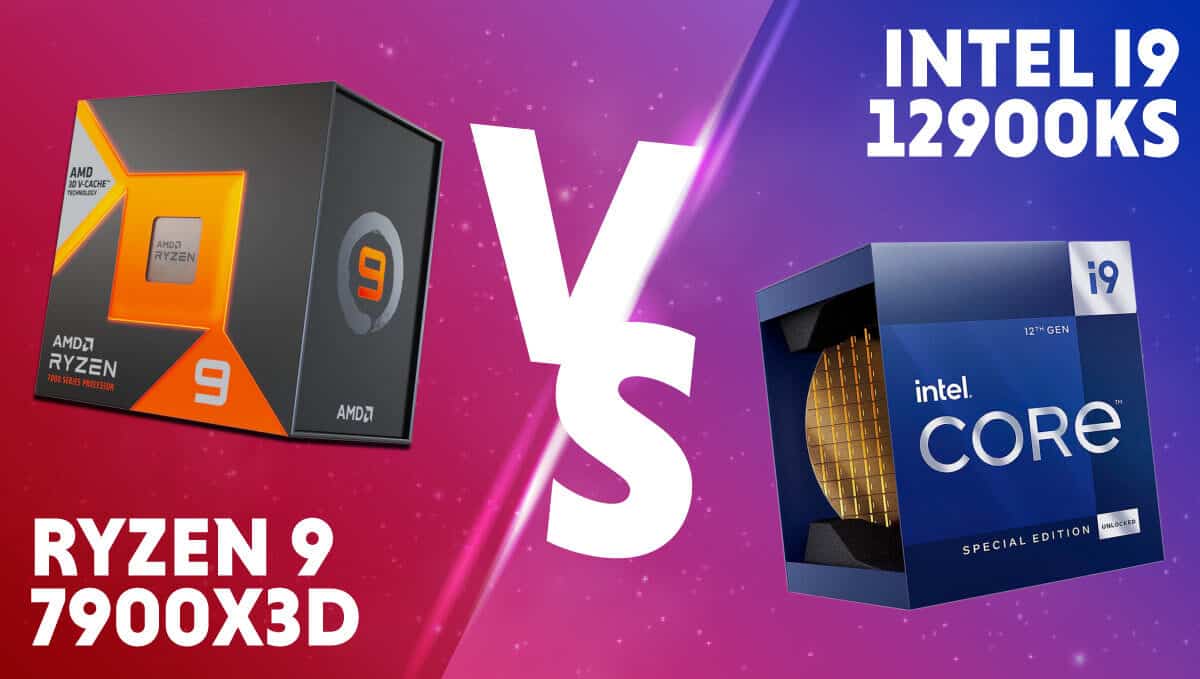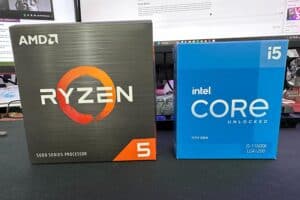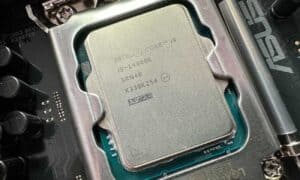Ryzen 9 7900X3D vs i9-12900KS
Ryzen 9 7900X3D vs i9-12900KS, which is better?

WePC is reader-supported. When you buy through links on our site, we may earn an affiliate commission. Prices subject to change. Learn more
The Ryzen 9 7900X3D is one of the two Ryzen 7000X3D processors that were released on February 28th, 2023, the other being its elder brother, the 7950X3D. The 7800X3D, unfortunately, had its launch postponed to April.
Now read: Is Ryzen 7000X3D worth it
In this article, we’re comparing the newly released 7900X3D with the last-gen flagship, the Core i9 12900KS, to find out how the two differ. This is Ryzen 9 7900X3D vs i9-12900KS.
Ryzen 7 7900X3D vs i9-12900KS: CPU specifications
Let’s first have a look at the official specs for both processors to get a better idea of what we’re working with.
Ryzen 9 7900X3D
- Core count: 12 (Multithreading enabled)
- Thread count: 24
- Core clock: 4.4GHz
- Boost clock: 5.6GHz
- L2 cache: 12MB
- L3 cache: 128 MB
- TDP: 120 watts
- iGPU: Radeon Graphics
- Socket: AM5
The R9 7900X3D has specs very similar to the standard 7900X. The most notable exception, of course, is the availability of a massive 128MBs of L3 cache to the CPU cores.
The existence of such an absurd amount of cache on the CPU die is made possible by AMD’s 3D V-cache technology, which involves stacking cache vertically rather than horizontally on the die.
Intel Core i9-12900KS
- P-cores: 8 (Hyperthreading enabled)
- E-cores: 8
- Thread count: 24
- P-core clock speed: 3.4 / 5.5 (GHz)
- E-core clock speed: 2.5 / 4.0 (GHz)
- L2 cache: 14MB
- L3 cache: 30MB
- Base TDP: 150W
- Max TDP: 241W
- iGPU: UHD770
- Socket: LGA1700
Released in early 2022, the Core i9-12900KS remained Intel’s flagship processor for the better part of last year. We now have stronger processors available in the company’s 13th gen lineup, but the 12900KS remains very competitive and is certainly a fitting processor to put up against the 7900X3D.
Ryzen 9 7900X3D and i9-12900KS compared
Here we discuss how the two processors differ in performance, power usage, and more.
Gaming performance
Gaming performance has historically boiled down to single-threaded performance. But we now have a new influencing factor on the rise – cache size.
The cache is essentially high-speed memory located right on the CPU die. Having more of it means that the processor has to access the much slower RAM less often, speeding up performance in certain workloads.
As it happens, gaming is the perfect example of a workload that benefits noticeably from the availability of the extra L3 cache.
Statistically, we see that the Ryzen 9 7900X3D and the i9-12900KS have nearly identical maximum clock speeds (5.6GHz vs. 5.5GHz).
The slight nuance here – all game-related processing on the 7900X3D is only carried out on the V-cache enhanced CCD, which has a lower max clock speed of just above 5GHz. Essentially, it’s the 12900KS’ threads that are operating slightly faster during gaming.
However, despite that fact, the 7900X3D comes out on top in gaming performance, purely due to the great benefit most games are able to derive from the extra L3 cache.
The 7900X3D delivers more FPS in most mainstream titles, and the exact amount varies based on how well a specific title is able to utilize V-cache. But, roughly speaking, we’re looking at FPS gains of 10 to 20% over the 12900KS.
Workstation productivity
For productivity, both processors deliver pretty similar performance. They have a similar amount of threads running at very similar clock speeds.
While the 12900KS does have more physical cores, half of the cores it does have are smaller efficiency cores, so the increased core count ends up not really amounting to a significant difference in multithreaded workloads.
The 7900X3D’s extra cache doesn’t benefit typical workstation workloads by a remarkable margin, so both processors ultimately end up providing very similar productivity performance due to their similar specs.
Power consumption and thermals
The Core i9-12900KS is extremely power-hungry, with the ability to draw upwards of 250 watts of power at maximum load. The 7900X3D has a much more moderate 120-watt TDP. Given that it delivers similar or greater performance than the i9-12900KS, it’s leaps and bounds more energy efficient than the i9.
The 7900X3D can be air-cooled (although an AIO is recommended), but with the 12900KS, you have to go with an expensive top-of-the-line AIO to keep temperatures under control.
Final word
In gaming, the Ryzen 9 7900X3D delivers more frames than the 12900KS because of its V-cache enhancement. In multicore processing, both processors are about neck and neck. And in terms of power consumption, the 7900X3D is much more efficient and produces less heat.




